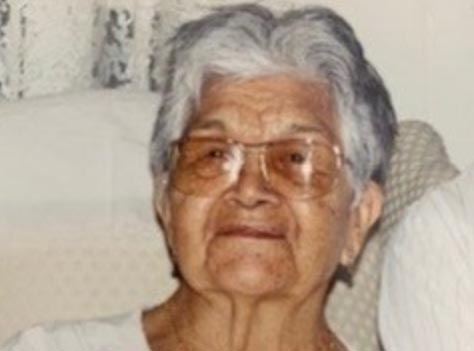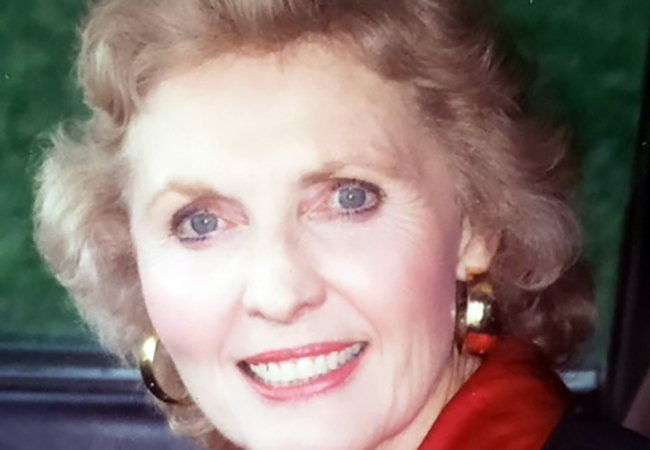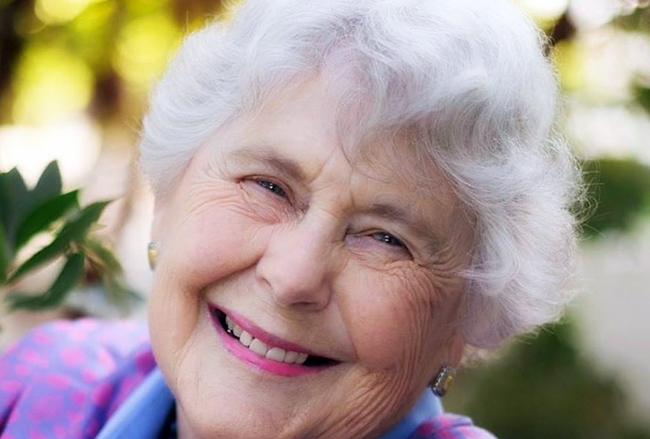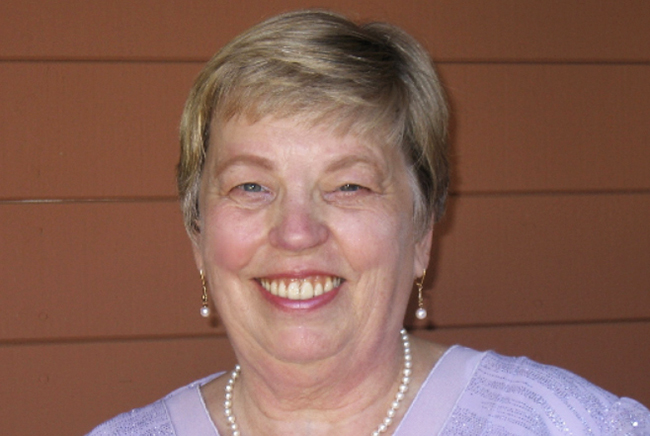Obituary: Mary Molina Palos

Arbol Verde founding family member, longtime CUSD employee
Longtime Claremont resident Mary Palos died May 7, after suffering a subarachovial hemorrhage and contracting COVID-19 while in a rest home. She was 105.
Mary Molina Palos was born on May 30, 1914 in Parras, Coahuila, Mexico to Benjamin Molina and Guadalupe Monsivaiz. Mary’s father died of the Spanish flu in 1918 when she was four years old. Her mother and seven older brothers came to California and settled in Artesia with family members and moved to Claremont in 1921 when she was seven. Her mother met and married Jesus Aguilera soon after and they had two more children.
Little Mary would get up at the crack of dawn to assist her mom in making burritos before sending her brothers off to work. Her mother passed away when Mary was 12 years old leaving her to take care of herself, her stepfather and her brothers. Jesus was the first Mexican gardener at Pomona College and Mary assumed household responsibilities that most adults wouldn’t have even entertained.
Her schooling ended in the sixth grade at the Mexican school in Upland. At the age of 21 Mary married Bruno Ornelas Palos and they had three children, Robert, Roger and Corinne. All three children attended Claremont schools, got married, and gifted Mary and Bruno with five grandchildren, 11 great-grandchildren and two great-great-grandchildren.
The Paloses were one of 12 families chosen to be a part of a project by The Intercultural Council in 1947 to integrate families of different cultural and ethnic backgrounds to live together and share common areas such as a tot yard and play area, clothes drying yard, wash room with a phone, barbecue and incinerator, and an adult recreation area.
The Intercultural Council can be seen as a social experiment for Claremont, bringing together Anglo graduate university students and Mexican-American families in attempt to build bridges of friendship and neighborliness between the two communities. Many social programs were introduced to the Arbol Verde community and Ms. Palos was instrumental in establishing The Well Baby Clinic, an organization promoting local doctor visitations to homes of lower income families for baby health care.
Another project she helped spearhead was The Club de Damas, which held Christmas parties for kids in the barrio and Anglo children in a little hall by the Packing House in downtown Claremont.
She and a few sisters-in-law thought of the idea of having a taco booth at a Jamaica (fiesta) at the first Mexican church in Claremont—Sacred Heart Church, which was built by Barrio residents in 1939 on the south side of the railroad tracks in Arbol Verde. The taco booth became a success and they earned enough money to purchase uniforms for the first Mexican baseball team in Claremont, the AC’s. A new church was built on Berkeley Avenue in 1951—Our Lady of the Assumption Catholic Church—where the fiesta tradition continues today. Sacred Heart Church was destroyed in 1967 to make way for Claremont Boulevard.
Throughout her years in Claremont, Ms. Palos was employed by many places. She served as a cook for parties of many prominent Claremont families. She babysat for Stephen Zetterberg and his siblings. She worked for 40 years in the Claremont Unified School District as the cafeteria manager in several elementary schools and El Roble Intermediate School; she served thousands of children throughout those years and loved all of them. They loved her in return. Before working at the school district, she spent time in the kitchens of Pilgrim Place, Claremont Manor, and Mt. San Antonio Gardens as a nutritionist, and was also head housekeeper for Griswold’s Hotel.
Ms. Palos retired from CUSD just after her husband Bruno retired after 40 years with Bentley’s Market.
Together they traveled to Ms. Palos’s place of birth in Mexico, spent time in Hawaii for their 40th anniversary, and Catalina for their 50th anniversary. Mr. Palos died in 1999 but Mary had hoped to share the 20th century with him.
At the age of 99, after calling Claremont home for more than 90 years, Ms. Palos moved to a rest home in Duarte—it held special memories because her 16-year-old sister-in-law had been admitted to the same rest home in 1938 after contracting tuberculosis. She had frequent visitors throughout her time there and always looked forward to those visits.
In March 2020, due to the COVID-19 pandemic, the rest home was put on lockdown and no family could visit. “The only way we could visit with mom was through something similar to FaceTime, which she had a problem with because of her eyesight and hearing,” her family said.
Coming to terms with having no visitors after five years was difficult for her and the family. The loneliness was unbearable. At a healthy 105, she could still feed herself and take care of every day functions. Soon after the lockdown, an employee from the rest home contracted the virus, exposing residents to the virus.
The last time her family was able to FaceTime with her they noticed she was very lethargic and had difficulty staying awake.
Three days later, the family received a call that she had fallen out of her wheelchair and hit her head, which resulted in Ms. Palos going to the emergency room for stitches. Her daughter received a call on the second day in the hospital to say that Mary had received a subarachovial hemorrhage in her head and there was bleeding involved. Ms. Palos could no longer swallow or speak very well, her family said. In addition, her hearing problem resulted in poor communication with doctors and nurses.
Along with the hemorrhage, Ms. Palos tested positive for a UTI and COVID-19. She was stable for her first week in the hospital as an asymptomatic COVID patient. After a week in the first hospital, her insurance would not pay for her to continue her stay there so she was transferred to a second hospital, her family said.
In both hospitals, Ms. Palos’s daughter told nurses and doctors about her hearing problem and that it would be best to put a sign above her bed letting all know that they needed to talk or practically scream into her good ear, her right ear, but to no avail.
While in the second hospital the family learned her vital statistics were normal but she started having a problem with her oxygen levels. She seemed to be stable at first but became serious soon after. Ms. Palos died from lack of oxygen intake.
“She died alone, with no communication, and with no family by her side to support her and love her,” her family shared. “It was heartbreaking.”
Ms. Palos loved to dance and sing and had often talked about having a big party after her burial with Mexican mariachi’s playing for her. Due to COVID-19 restrictions, her mortuary viewing was limited to 10 people as well as her burial. Only a small group of immediate family members were able to say goodbye.










0 Comments